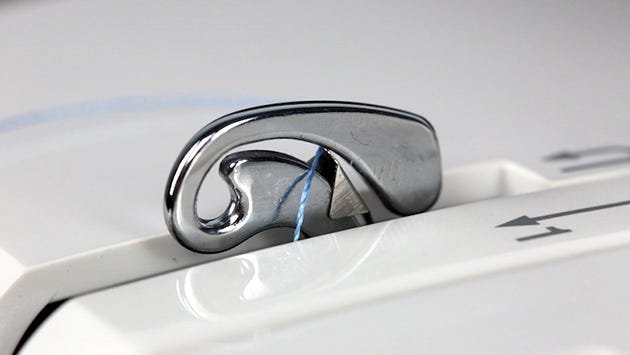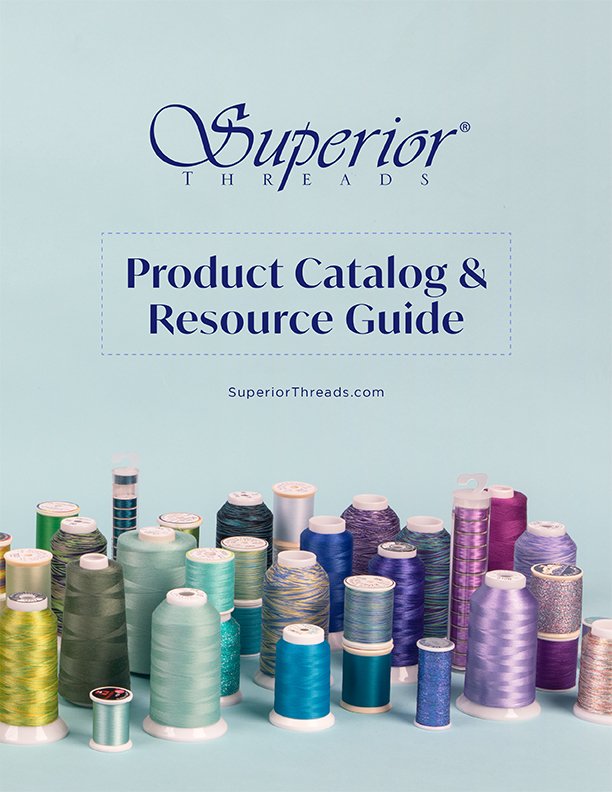Superior Education
WINDING MONOPOLY BOBBINS
- MONOPOLY
- BOBBINS
- APQS
By Dawn Cavanaugh for Superior Threads
How to wind MonoPoly using the APQS Turbo Bobbin Winder
Some quilters have frowned upon using invisible thread in the past, mainly due to its thickness and the risk that nylon invisible thread would eventually become brittle from exposure to light or heat. Now that invisible thread is available in a thin, polyester version from Superior Threads. Using invisible thread presents many advantages for the machine quilter.
Superior's MonoPoly is very thin in diameter, making it suitable for many quilting situations, such as outlining and highlighting applique, stitching in the ditch, couching decorative threads, quilting redwork quilts, and more. What's even better, MonoPoly is strong yet has low stretch, making it wonderful for use in the bobbin of an APQS machine as well as through the needle. The new Turbo Bobbin Winder from APQS winds bobbins in a fraction of the time it takes on a traditional free-standing bobbin winder. Since the MonoPoly thread can be slippery as it leaves the spool at such a high speed, try folding a small piece of batting into about a one-inch square and then wedging this batting into the thread guide directly above the spool. Push the batting into the curve of the thread guide just until it puts a slight amount of pressure on the MonoPoly thread. This will help ensure that the thread doesn't tangle as it leaves the spool.

Thread not properly seated in the takeup lever

Example of eyelashes from uneven tension
Another feature of the Turbo Bobbin Winder is the ability to adjust the tension on the thread as it winds on a bobbin. Loosen the tension by turning the tension knob to the left. Depending on where you started with the tension setting, you may need to loosen the tension a full turn or more, so that the invisible thread does not unduly stretch as it winds on the bobbin. In addition, wind the bobbin only half full.
The goal is to get the invisible thread to behave just like normal sewing thread. If you notice that it is very kinky when wound on the bobbin, then loosen the tension even more before winding another bobbin. Finally, adjust the tension on the bobbin case by loosening the screw closest to where the thread exits the bobbin case. You may need to loosen it considerably. Pull on the bobbin thread after it is loaded into the bobbin case and under the tension finger, then release the thread. It should not be kinked, but should behave similarly to normal quilting thread. Test your tension by sewing on a scrap quilt sandwich, and adjust the top or bobbin tension as needed.

 View Our Product Catalog
View Our Product Catalog